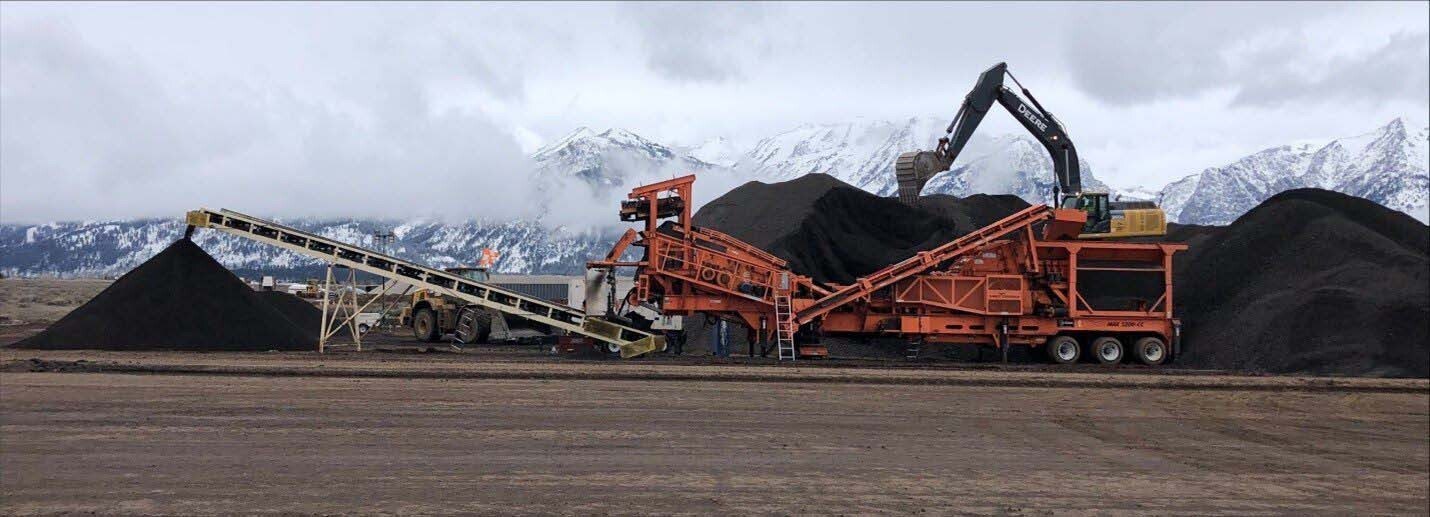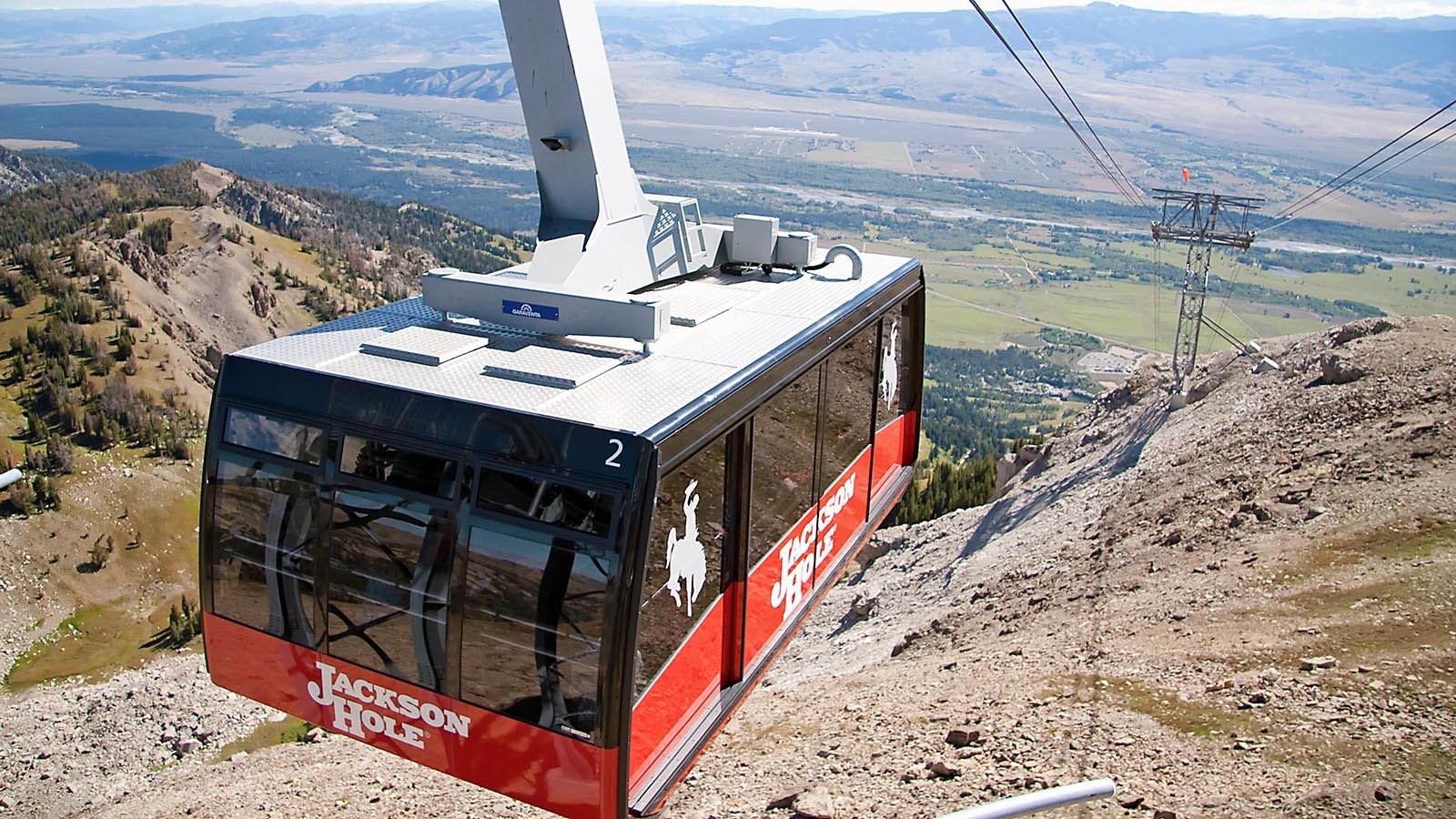Recycling cans? Sure.
Recycling glass? Absolutely.
Recycling an airport runway… wait, say again?
The Jackson Hole Airport’s runway is in the process of being replaced, but because of the airport’s unique location inside a national park, the project’s environmental impact is at the top of mind for managers.
Which explains why 90% of the existing material being removed is being re-used rather than hauled off and discarded.
“We are, as you may know, the only commercial service airport fully located inside of a national park,” said Meg Jenkins, the communications manager and public information officer for the Jackson Hole Airport. “So we really try and be good stewards of our space and really considerate of any impacts we’re having on our surrounding ecosystem.”
Jenkins told Cowboy State Daily that this routine project has been anticipated for almost a decade and the staff at the airport has been preparing for the project for the last six or seven years.
“Airport runways are a lot like highways,” she said. “They only have a certain life expectancy, so to stay up to par and keep our safety measures where the (Federal Aviation Administration) likes to see them, typically, runways are replaced anywhere from every 40 to 70 years, depending on where they’re at and what they’re made out of.”
While runway replacements may be routine airport maintenance, there are several unique aspects to the work at Jackson Hole Airport.

Minimizing Environmental Impact
Jim Elwood, the airport’s manager, told Cowboy State Daily that project managers are focusing on making sure the airport’s environmental impact is as small as can be reasonably managed.
“Every decision that is made is focused on recognizing and respecting that we are the only commercial air service within a national park, and the very special place that is this Yellowstone ecosystem,” Elwood said. “So those things are incredibly valuable to the airport board, and to the staff that work here, that we do things to a high level.”
One of those environmentally conscious decisions, according to Jenkins, was to use the material being torn up from the existing runway to create the new one, saving thousands of dollars in materials – and in fuel.
“Right now, they are milling the old runway,” she said. “They’re estimating reusing 90% of those runway millings back into the new runway, and that part is estimated to keep about 8,500 trucks off our local roadways, and saving 187,000 gallons of fuel.”
Jenkins said so far, crews have already screened and crushed about 20,000 cubic yards of native materials that they have excavated on-site to use as sub-base for the new runway. By not having to truck that material to the airport, the crews kept 1,300 to 2,000 trucks off the community roadways.

State-Of-The-Art Drainage
Another project element intended to reduce the airport’s environmental impact is a state-of-the-art drainage system that will capture all the surface water from the runway, keeping chemicals from leeching into the ground.
“Streets, roadways, runways have a lot of different additives that come off of airplanes that aren’t great to go back into the ground,” Jenkins said. “So if we can capture all that and funnel it through our storm system that we put in just a couple of years ago, it gets filtered naturally through different layers of soils, and actually bubbles back up as almost pure drinking water.”
“This runway, to my knowledge, will be the most environmentally respectful runway with those drain systems and filtration of any runway that I’m aware of in the United States,” Elwood said.
The project, which began in mid-April, is expected to take 78 days to complete, an inconvenience to the community that is not far from the minds of project managers, Jenkins said.
“It’s a very big deal to our community and our locals to not have their service right now,” she said. “Fortunately, for Jackson, we typically get really busy starting the Fourth of July. So we tried to be really thoughtful in the process of when we wanted to do this closure, to have the least amount of impact to travelers and our local folks. And so we did choose the 78 days to be ready and operational for our busy Fourth of July kickoff to our summer tourism season.”
Tourism Impact
However, Jackson’s loss is a short-term gain for surrounding airports. Yellowstone Regional Airport Manager Aaron Buck told Cowboy State Daily that Cody will add at least one United Airlines flight per day during the Jackson closure – and Jenkins said other airports in the region will take some of the overflow as well.
“Some of the airlines have added additional service to Idaho Falls,” she said. “So a lot of the surrounding airports, as you can imagine – Bozeman, Cody – have all been in touch with us and prepared themselves for a little additional influx of passengers due to our closure.”
Jenkins added that because of the lease the airport has with the U.S. Department of the Interior, the scope of the project is limited to replacing the existing runway, not extending or widening it in any way.
“Because of our location inside Grand Teton National Park, we have some commitments to our lease, we cannot be lengthening or extending this runway without their approval. So we are as big as we will ever be here at the Jackson airport.”





